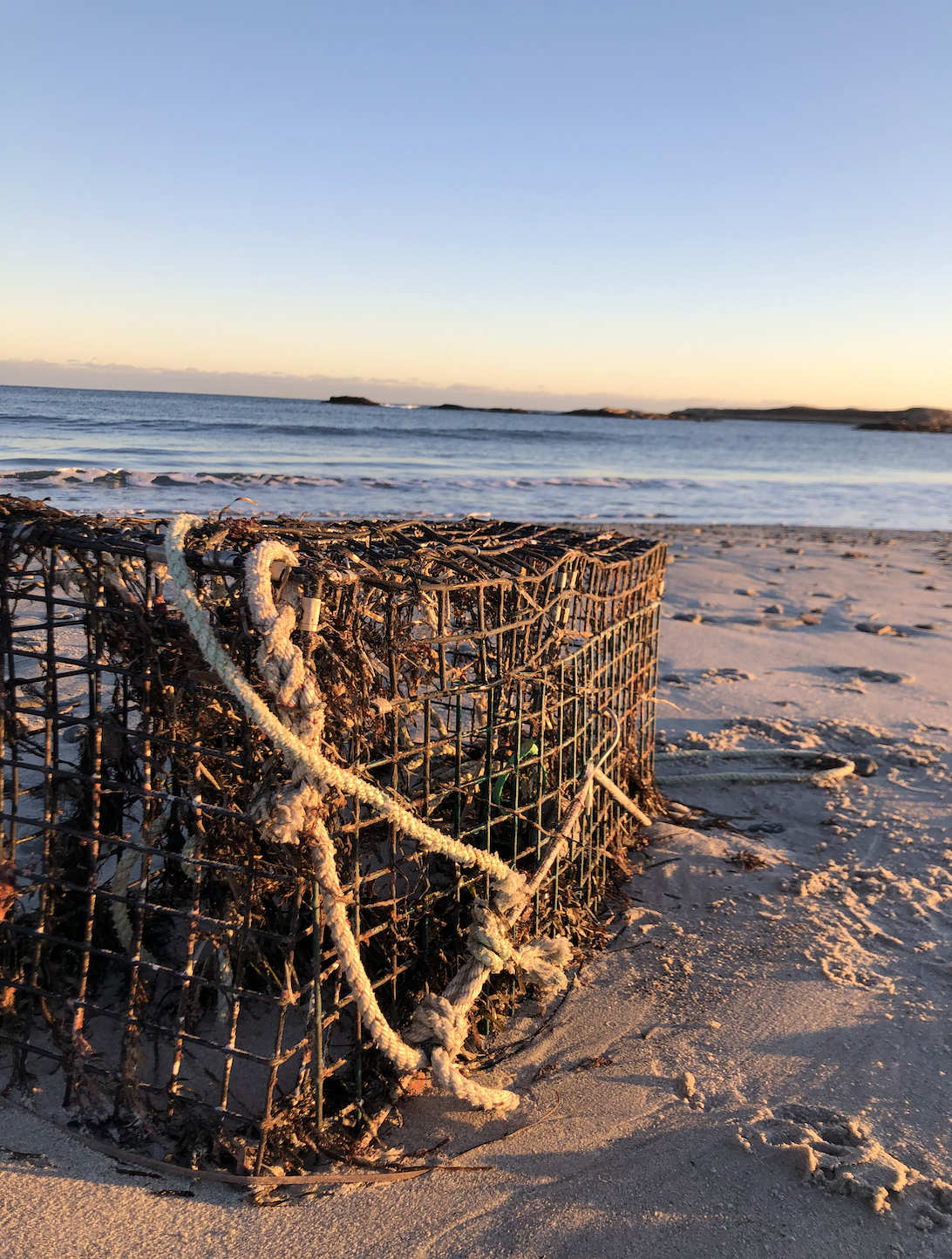Special Issue of the journal Marine Policy on abandoned, lost, and discarded fishing gear
By Safina Center Scientist-in-Residence Eric Gilman
A found piece of fishing gear that was either abandoned, lost, or discarded by fishers. ©Abigail Costigan
Earlier this year we launched a special issue as part of the journal Marine Policy on abandoned, lost and discarded fishing gear (ALDFG). It has been a tremendous success, with 12 manuscripts accepted for publication and another 9 still undergoing peer review. Additional articles will be added to the ALDFG special issue as they are accepted, including as a final installment an article introducing the special issue.
Over the past century, and particularly since the 1950s, the rapid expansion of large-scale industries outpaced the accumulation and synthesis of scientific information on ecological and socioeconomic responses. This prevented developing evidence-informed conservation management frameworks, introducing tremendous risk of unintended and adverse consequences. This includes risks from the effects of ALDFG and other types of marine debris produced by fisheries.
The belief that ocean resources were limitless (“probably all the great sea fisheries…are inexhaustible”, T.H. Huxley, 1883), and similarly that the solution to marine pollution was dilution, has finally been dismissed as recognition of humans as the dominant drivers of changes to Earth’s biosphere has resulted in defining a new geological epoch, the Anthropocene. Ecosystem services that underpin human survival and quality of life are unequivocally linked to and dependent on the state and resilience of ecosystems, the living biosphere and broader Earth system. The rapid expansion of the global footprint of marine capture fisheries over recent decades, combined with the transition to synthetic, lighter but more durable materials used for fishing gear components, has resulted in increasingly problematic adverse effects from abandoned, lost and discarded fishing gear (ALDFG).
ALDFG, also referred to as derelict fishing gear, is one component of marine debris produced by fisheries. The Special Issue scope includes derelict anchored and drifting fish aggregating devices (FADs), which are used as a fishing aid. ALDFG’s components, when leakage occurs from fishing and support vessels at sea, can be defined as follows:
· Abandoned: fishing gear that has been deployed at sea for fishing over which an operator or owner has control and could retrieve, but deliberately leaves at sea.
· Lost: fishing gear over which an operator or owner has accidentally lost the ability to locate and/or recover and does not recover.
· Discarded: fishing gear that fishers deliberately release into the sea without any attempt for further control or recovery, and does not recover.
Other pathways for fishing gear to enter the sea include leakage from fishing harbors, seaports and coastal landfills.
There are numerous intentional and unintentional causes for gear from marine capture fisheries to be abandoned, lost or discarded, and these causes vary substantially by gear type, region, small- vs. large-scale and individual fishery. Drivers such as loss during inclement weather, snagging on submerged features and debris by bottom fisheries, gear conflicts, conflicts with marine vessels, interactions with marine megafauna, practices by inexperienced new entrants, intentional abandonment and discarding, and the unavailability of affordable and convenient port reception facilities may be relatively prevalent global causes of ALDFG production. In addition to direct drivers, managers should identify and account for underlying, indirect drivers for ALDFG production when developing ALDFG management strategies. For example, government subsidies for new gear may reduce incentives to repair or use worn components to refurbish gear, increasing gear abandonment and discarding and reducing the incentive to locate temporarily lost gear.
ALDFG is a particularly problematic component of marine debris, where many of the adverse effects result from both synthetic and natural materials. The rates and magnitudes of ALDFG production, in combination with the composition of the debris and the fate, determine ecological and socioeconomic impacts. Adverse impacts caused by ALDFG include:
· Ghost fishing, where, under certain conditions, derelict gear can continue to catch and kill organisms for years,
· Distribution and transfer of toxins and microplastics into marine food webs at various trophic levels, from zooplankton to large pelagic fishes.
· Transport of invasive alien species, and distribution of microalgae that may cause harmful algal blooms.
· Alteration and degradation of coastal and marine habitats.
· Obstructing vessel navigation
· Damage of in-use fishing gear and submarine cables; and
· Reduction of the socioeconomic value of coastal and nearshore areas
Interventions that will be effective at mitigating ALDFG in a particular fishery depend on the fishery-specific context, including drivers, adverse impacts and the robustness of the fisheries management framework.
There has been recent recognition of the need for improved understanding and evidence-informed management of these adverse ecological and socioeconomic effects of ALDFG. The articles composing this Marine Policy special issue on ALDFG contribute to achieving this goal. The articles contribute to improving the understanding of key requirements for robust, effective monitoring and evidence-informed management of ALDFG. This includes knowledge of ALDFG drivers, rates and magnitudes of production, composition, fate, ecological and socioeconomic impacts, and the identification of effective mitigation options given the enabling environment of individual fisheries.

